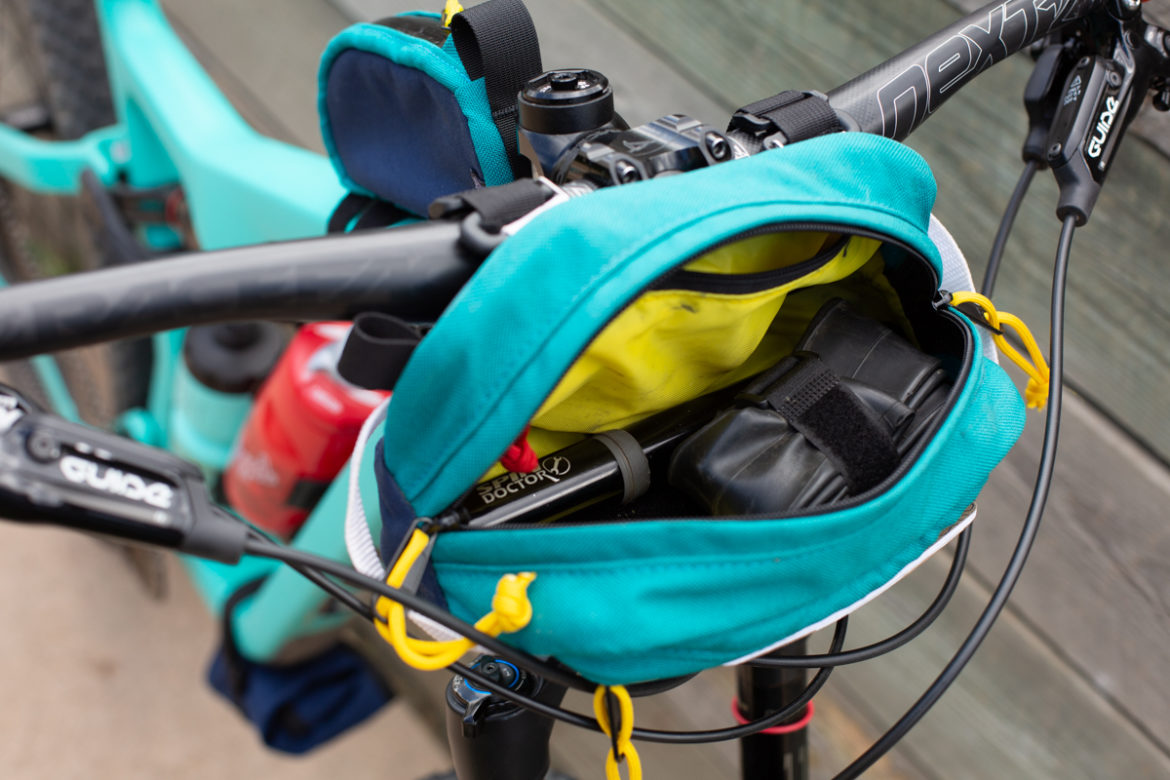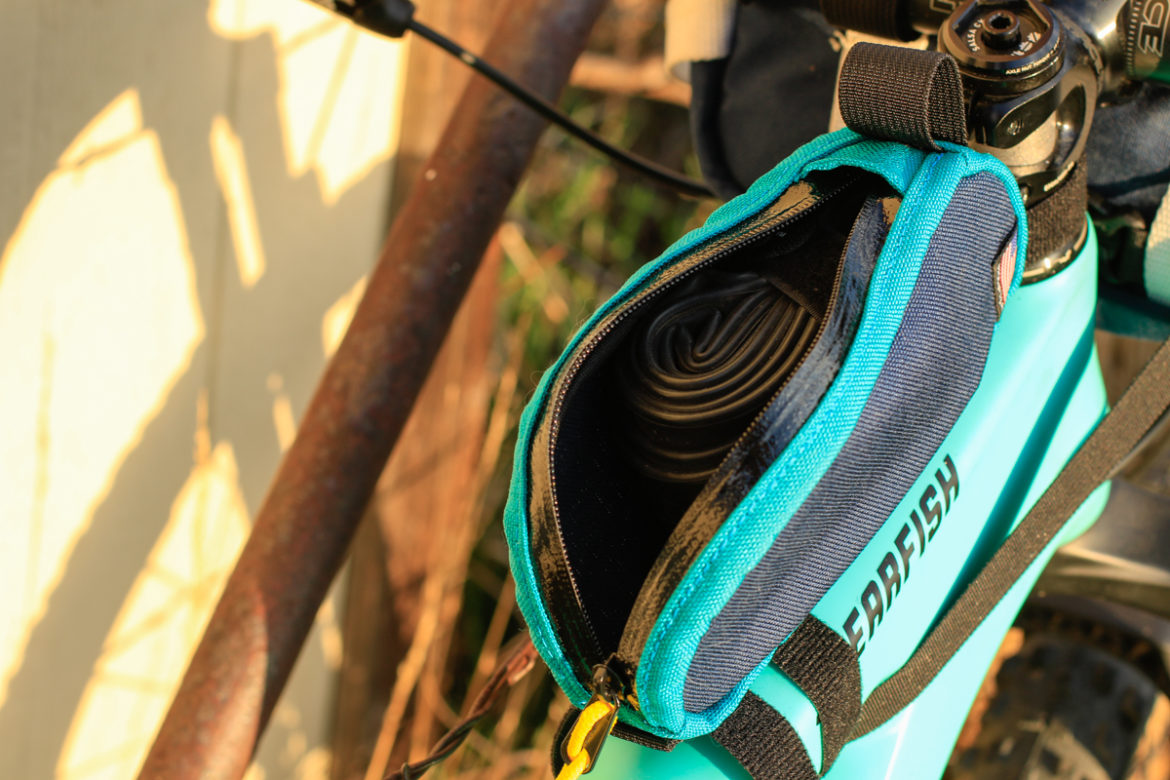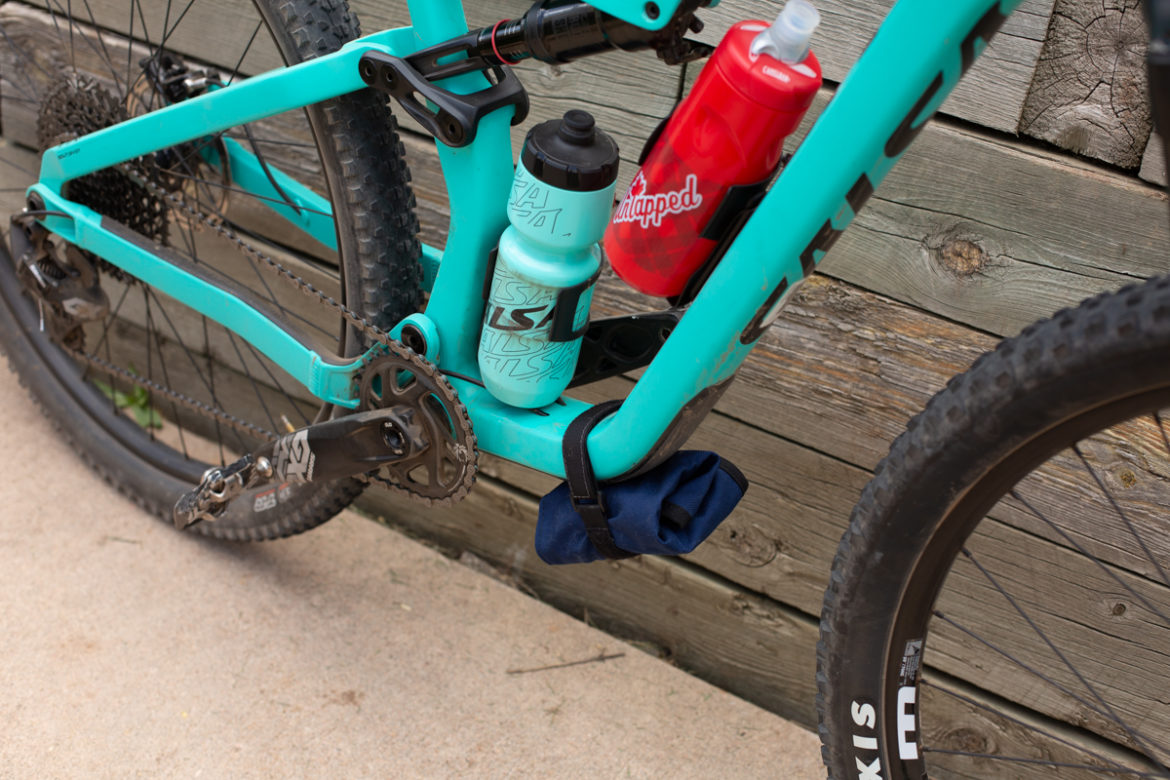
Mountain bikers are passionate about their pack preferences to say the least. Wear a fanny pack around a group of full-on hydration pack enthusiasts, and you’ll hear about it.
“Hope you got everything you need in there.”
The funny thing is, it seems like it’s always from someone you’d see wearing a fanny pack at Disneyland packed with a tube of sunscreen, a roll of quarters, and a disposable camera. But, I get it. The backcountry isn’t Disneyland and just last summer a guy mountain biking with a backpack — not a hydration pack, but a backpack — with a full-size floor pump in it saved me from a helping of forearm pain after I slashed a sidewall.
Either way you want to slice it, it’s important to have the right stuff out on a ride. For sub-two-hour rides, I’m a fanny pack guy. On longer days, catch me with a hydration pack, stuffed with tools, tire plugs and patches, gels, and a half-a-burrito, whether the pack is comfortable to wear or not.
I’m always curious about how to get the weight off my back, and in particular my upper back. It’s far more comfortable to ride without a full pack, and why not if you can bring everything you need?
With a few different bags from North St., this concept becomes a little easier to pull off.
Pioneer 9
The Pioneer 9 is a 2.65L bag that can be used as either a handlebar bag or a hip pack. For this review, my goal is to keep as much gear off of my back as possible, so I’ll use it as a handlebar bag, doubled up with the Top Tube bag by North St. To find out how it rides as a hip pack, read a review here. The Pioneer 9 has been slightly updated since.
The Pioneer 9 is made from Cordura nylon with a water-resistant finish. It’s also got an interior pocket (a $20 add-on), and an exterior pocket to keep things organized. The pack itself starts at $55, and the hip belt or handlebar strap sell for another $13, so for a hip pack, it’s not the most competitively-priced option. North St. however is based in Portland, Oregon, and that’s where the bags are made, so you do get the pride of buying an American-made product.

The Pioneer has enough room for a spare tube, tool kit, patch kit, and all the basics. I’ve also fit a packable rain jacket, plenty of snacks, and a set of keys. To free up even more space in the pack, North St. makes a Tool Roll that can be strapped up under a saddle or anywhere else you can find to carry even more stuff.
Fuel Pouch
The Fuel Pouch sits at the front of the top tube, pushed up against the steerer tube. It comes with three velcro straps. One wraps around the steerer tube, and the other two wrap around the top tube. It’s great for fast snack access.

Performance
My main concern with a setup like this is that the bags might bounce around, but the straps help quite a bit. The stabilizer strap on the Pioneer seems to work best if it’s wrapped around the inside of where the top and bottom tube join, behind the head tube.
The handlebar strap kit pulls and hoists the Pioneer tight near the handlebars with minimal sag, and the top tube bag snugged up to the frontward corners of the cockpit.

When loaded down with weight, this isn’t a perfect set up. The Pioneer does bounce around a little, pushes brake hoses and shift cables down, and doesn’t necessarily clean up your cockpit. The handlebar straps can be cinched down pretty tight, but they still tend to roll down and drop the Pioneer a little lower toward the head badge.

The movement wasn’t enough to make me want to strap it back on my hips. Climbing with the packs set up on the cockpit didn’t give me any issues. While descending, I noticed the noise more so than if I had a bag on my back, but that’s to be expected. If you load everything properly and put larger, softer items in the main compartment, and smaller stuff like tools or keys in the smaller pockets, it reduces the shake and noise. However, the noise and shake was bearable and didn’t make it any harder to jump the bike, or hit technical sections at speed.
I moved tools into the Tool Roll and threw it on the down tube of the bike, which made more space inside the handlebar bag.

The biggest benefit to running the Pioneer and Top Tube bag on the cockpit is comfort and convenience. I got less sweaty thanks to added airflow on my jersey and felt more athletic without a bag on my bike. This “day packing” setup made it more convenient to get things out of a bag or put things away. I kept food and gels in the top tube bag, and it saved me from having to stop and twist around a fanny to pull out a snack. These are first world problems, I know, but it’s nice to stuff your face on the move.

The caveat to running a setup like this is that you’ll need water bottle storage on your bike. The Salsa Spearfish I’m testing has all the water bottle mounts you could want, so it’s not an issue. Fidlock has some fun solutions to get more water on a bike, but to go completely packless, it’ll require room on the bike for enough water. With two full water bottles, I could easily manage a three-ish hour ride and have plenty of food and storage with the North St. bags. To extend that time and wear another lumbar pack, maybe something with a water bottle holder or two like the Osprey Savu, I could easily get a five to six hour ride in, without wearing a full-size hydration pack.

Final word
This is by no means a final solution to wearing or not wearing a hydration pack (see the first sentence about preferences). It is, however, another viable option for a lot of people who want to safely get rid of a hydration or lumbar pack and still have everything they need with them. The North St. bags perform well and it’s great to have more options out there to load gear however you like.






















